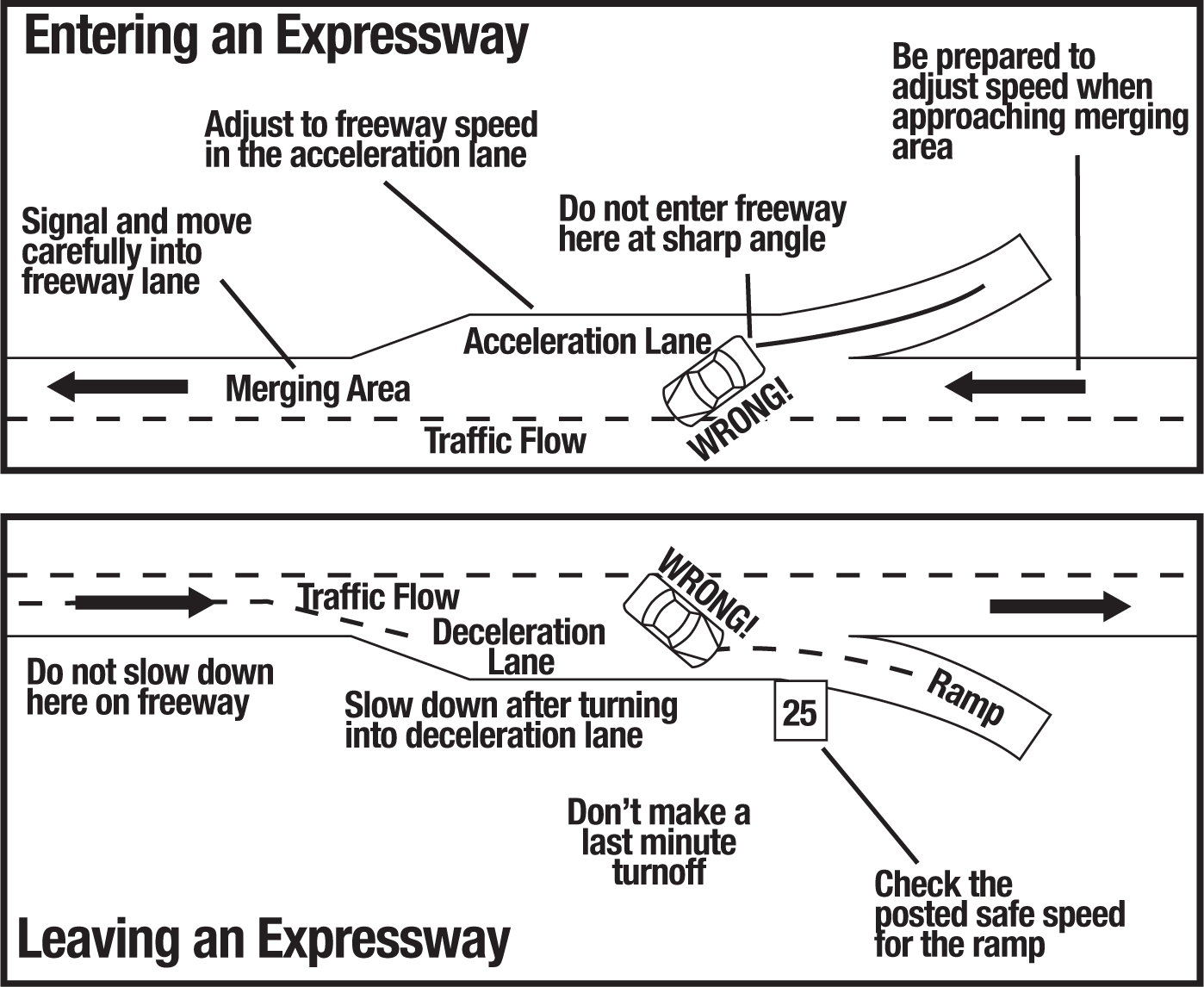Florida Driver Handbook: Expressway Driving
Order now5. Driving Safety
- 5.1. Distracted Drivers
- 5.2. Getting Ready to Drive
- 5.3. Defensive Driving
- 5.4. Driving Safety for Mature Drivers - Tips to Help You Drive Safer .... Longer
- 5.5. When You Back Up
- 5.6. Avoiding Rear-end Collisions
- 5.7. Emotions
- 5.8. Basic Driver Improvement
- 5.9. Safety Belts
- 5.10. Protecting Children
- 5.11. Speed Limits
- 5.12. Following Officer's and Fireman's Instructions
- 5.13. Crossing Intersections
- 5.14. Right-of-Way
- 5.15. Stop Signs
- 5.16. Open Intersections
- 5.17. Roundabouts
- 5.18. Driveways
- 5.19. Emergency Vehicles
- 5.20. Making Turns
- 5.21. Turnabout (Three-Point Turn)
- 5.22. Turn Signals and Emergency Signals
- 5.23. Traffic Lanes
- 5.24. Blind Spots
- 5.25. Passing
- 5.26. Minimum Safe Following Distances
- 5.27. Parking
- 5.28. Expressway Driving
- 5.29. Night Driving
- 5.30. Animals
- 5.31. Reduced Visibility
- 5.32. Handling Emergencies
- 5.33. First Aid
Expressways - also called interstate highways, freeways, and turnpikes are multiple-lane roads with no stop signs, traffic lights, or railroad crossings. For these reasons, expressways can give you a fast, safe way to get where you need to go.
Pedestrians, hitchhikers, bicycles, animal-drawn vehicles or motor-driven cycles and motor scooters with 150 cubic centimeter displacement or less are not allowed on expressways.
5.28.1 - Entering and Leaving Expressways
Vehicles can enter and leave expressways only at certain points. Because expressway traffic is usually moving at or close to the maximum speed allowed, you need to know how to enter and exit safely.

All expressway entrances have three basic parts: an entrance ramp, an acceleration lane, and a merging area. Follow these guidelines to enter an expressway safely:
- On the entrance ramp, begin checking for an opening in traffic. Signal for your turn.
- As the ramp straightens into the acceleration lane, speed up. Try to adjust your speed so that you can move into the traffic when you reach the end of the acceleration lane.
- Merge into traffic when you can do so safely. You must yield the right-of-way to traffic on the expressway. You cannot always count on other drivers moving over to give you room to enter, but do not stop on an acceleration lane unless traffic is too heavy and there is no space for you to enter safely.
When leaving an expressway:
- Get into the exit lane. Posted signs will tell you which one. Most expressway exits are from the right lane.
- Signal your intention to leave the expressway by using your turn signal.
- Slow down as soon as you are off the expressway. Check the posted safe speed for the exit ramp.
- Do not make last-minute turns into an exit. If you go past your exit, you must go to the next one.
5.28.2 - Expressway Safety Reminders
- Plan your trip. Know just where you will get on and get off.
- Drive in the right lane and pass on the left. If there are three lanes, use the right lane for lower speed driving, the left for passing. If you stay in the right lane, watch for cars entering the expressway. Adjust your speed or move into the center lane so they can enter safely.
- Never stop on the pavement, shoulder, or connecting ramp of an expressway except in an emergency. If your vehicle breaks down, it may be parked on the side of the expressway (completely off the pavement) or no more than six hours. Raise your hood and tie a white cloth to your antenna or left door handle to show you need help.
- Never back up on an expressway entrance ramp or exit ramp. The only exception to this would be if you are trying to enter an expressway through an exit. In this case, you would see a "WRONG WAY" or "DO NOT ENTER" sign. Then you must back up or turn around.
- Do not cross, drive on or park on the median strip.
- Do not follow too closely. Rear end collisions are the greatest danger on expressways. Always leave room for emergency stops.
- Stop driving when you feel tired. On long trips the hum of the engine and your lack of movement can make you feel sleepy. Stop for a cup of coffee, a short walk, or a nap. Do not risk falling asleep at the wheel.
Check out our Customer Reviews!


